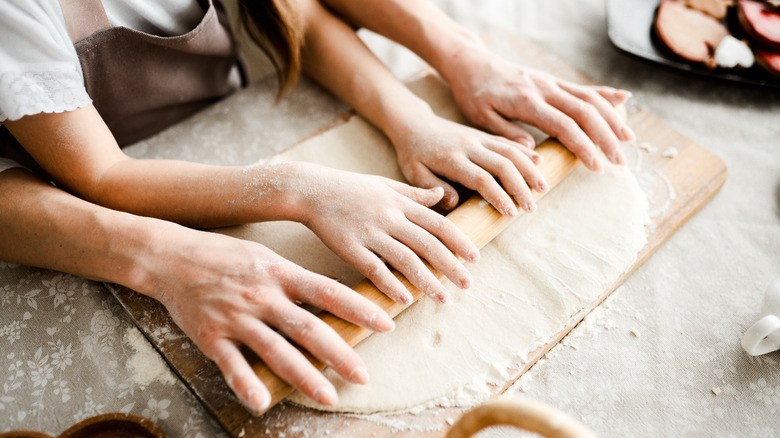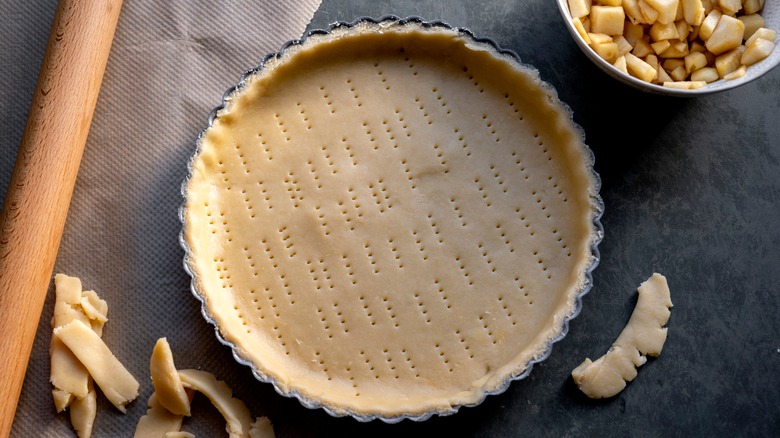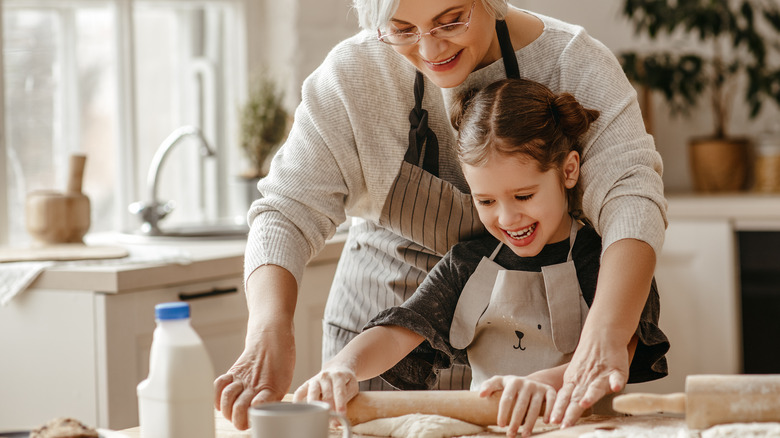How To Prevent Sticky Pie Dough
In the kitchen, classics are hardest to get right. Bringing an elegantly plated steak tartare to the table will impress even the most critical dinner guest. But a perfectly boiled chicken breast -– or even trickier, a flawless pie crust? Fuhgeddaboutit.
Pie crust is infamously one of the toughest staples to nail. Hastily sifting flour can lead to lumpy dough. Adding too much flour can dry it out and create a crust riddled with cracks. Rolling dough too thin makes for an easily-burnt waste in the oven. Leaving dough too thick makes for a pie with an uncooked, inedible crust. The list goes on.
Perhaps the most frustrating pie crust predicament is the dreaded sticky dough. Have you ever spent the better part of an hour cutting butter into flour, only to find that your dough sticks like glue to the rolling pin (and to everything else in the kitchen)? What gives? Luckily, there are a few surefire ways to prevent sticky dough — and the ensuing frustration that comes with it.
How to un-stick sticky pie dough
According to Eating Well, sticky pie dough is the product of too much moisture. Your knee-jerk reaction might be to simply add more flour into the mix, but think twice. Too much flour, it says, will dry out your pie crust, making it closer to a cracker than a dough.
Instead, Eating Well offers a different technique. To avoid overworking sticky dough, the site recommends rolling the pie crust between two pieces of parchment paper. The paper won't stick to the rolling pin; all you'll have to do is peel off the paper and transfer the dough into the pie plate. The outlet also suggests chilling the dough before rolling it out, for easier manipulation. The Pan Handler recommends at least 30 minutes in the fridge before you take out your dough and start working it.
Christopher Kimball, veteran chef and founder of multimedia instructional food preparation organization Milk Street, offers another method of curbing sticky pie dough. To do it, he said via Williams-Sonoma, combine 3 tablespoons of water with a couple teaspoons of cornstarch, and microwave for 30 seconds. It should develop a gel-like texture, which can then be pulsed into your pie crust's dry ingredients before adding the butter. This technique also helps prevent pie crust from shrinking in the oven.
Other reasons for sticky dough
Temperature might have a larger impact on the final product than you think.
Serious Eats maintains that chilled butter makes all the difference in avoiding sticky dough. When butter is cold and firm, the site says, pie dough will feel supple and move pliably as you knead. However, when the room temperature climbs above 73 degrees Fahrenheit (like on a hot day, or after you've had the oven on in the kitchen for a while), every surface that comes in contact with your dough will warm it, which softens the butter and makes it sticky to the touch. To avoid sticky dough, keep the ceiling fan on and the butter chilled until you're ready to use it.
Whether you're gearing up to make a summer peach pie, or a shepherd's pie on a cold day, keep these ol' reliable methods in mind for achieving that perfect, non-sticky pie crust every time


